#Human-centered design
Explore tagged Tumblr posts
Text
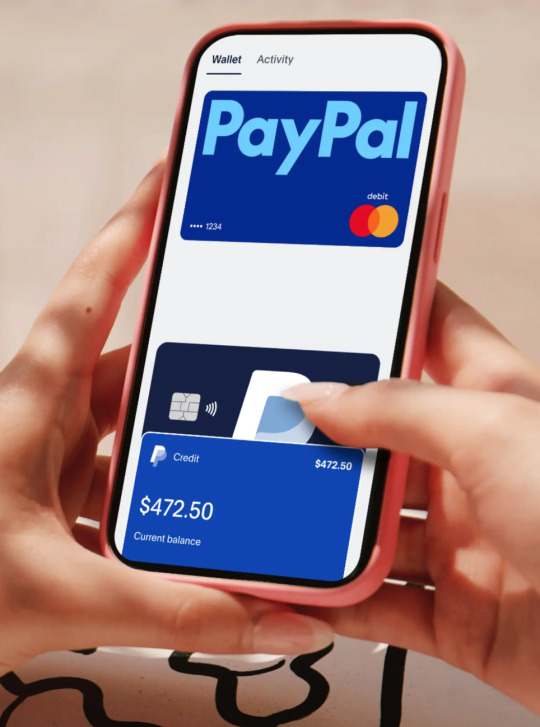
Image from PayPal.com
Design Parameters for PayPal's Financial Solutions
PayPal continues to evolve and maintain its relevance in the financial technology landscape by consistently holding value for users and adapting to their needs. Since its inception in 1998, PayPal has revolutionized the way consumers and businesses transact, empowering over 435 million active users across more than 200 markets. By facilitating immediate peer-to-peer payments, PayPal has transformed consumer behavior, reducing reliance on paper checks and paving the way for a future where physical debit and credit cards may become obsolete. Importantly, PayPal has also played a crucial role in helping small businesses grow and thrive in an increasingly digital marketplace.
The platform effectively anticipates user needs and technological advancements. PayPal allows consumers to discover products, compare prices, make purchases, track packages, and manage returns—all in a streamlined manner. This comprehensive approach fosters new behaviors, especially among its diverse user demographic, which spans generations. Notably, the fastest-growing demographic includes individuals over 50, with impressive usage statistics showing 85% of Generation X, 75% of Millennials, 73% of Baby Boomers, and 71% of retirees actively using the platform.
PayPal's innovations also extend to environmental sustainability. By significantly reducing the need for physical banking infrastructure and paper transactions, PayPal helps lower carbon footprints, contributing to a more sustainable future. Furthermore, the company has reduced remittance costs and expanded its services to include credit options, investment products, and the ability to buy, hold, and sell cryptocurrencies. Utilizing AI technology, PayPal analyzes customer behavior to make real-time risk decisions, ensuring security for its users. Its success has not only solidified its role in the fintech industry but has also catalyzed the emergence of other influential companies, illustrating its lasting impact on the financial landscape. With its commitment to adaptability and user-centered design, PayPal remains a cornerstone of modern financial solutions, poised to shape the future of how we transact.
#PayPal#ai technology#design leadership#convenience#tangible and intangible parameters#design leadership parameters#human-centered design#serving a community need#modified behavior
6 notes
·
View notes
Text
If user errors keep happening, what about the system design is leading the users to keep making this error? If the intuitive action is wrong, the design is wrong. The definition of "intuitive" comes from the user, not the designer.
Similarly, no system should be so secure that the users circumvent the security. A door with two locks is secure; a door with twelve locks is propped open. If you open the door to the vault once per day, it can be a highly secure process with multiple steps; if you open a door every five minutes, the process to open it cannot take more than a few seconds without the process's being circumvented within the day, and "a few" is pushing it.
Back to the original topic: understaffing is willful organizational failure. The number of people needed to cover the amount of work must include a factor for all leave allowed plus all required non-work (meetings, training, travel) plus a fudge factor for non-allowed leave like firings, quitting, FMLA, or someone just not showing up. "Bus factor" is about losing specific people, but many organizations struggle because they don't have enough people. If your organization is screwed when anyone calls in sick, your organization is screwed.


TELL IT HOW IT IS GIRL 👏
23K notes
·
View notes
Text

Dive deep into the world of UX design process with this comprehensive guide, exploring every facet of the process to create meaningful and user-centric digital experiences.
0 notes
Text
Visual Diary 3 Post 2: Slip-On Shoes
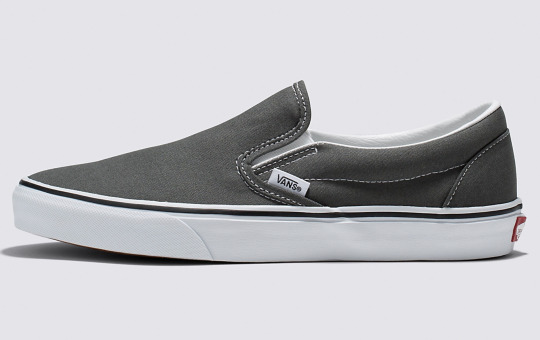
My second example of a human-centered product is slip-on shoes. Pictured above are slip-on Vans (just one example of many slip-on shoes on the market), which I personally really enjoy wearing.
There are countless ways that a shoe could be made more innovative, visually or technically, with new materials or unique silhouettes. Slip-on shoes, on the other hand, focus less on flashy innovation and instead are a simple, understated product that meets a lot of otherwise unmet human shoe needs. I think it's a great example of empathic design, as it appeals to human needs, of course, but also to human constraints and practices. Slip-on shoes offer convenience to busy people who must rush out the door. Slip-on shoes make independence possible for those who perhaps have mobility issues that make tying shoelaces a challenge. It is a simple product that helps people achieve these human needs of convenience and independence.
1 note
·
View note
Text
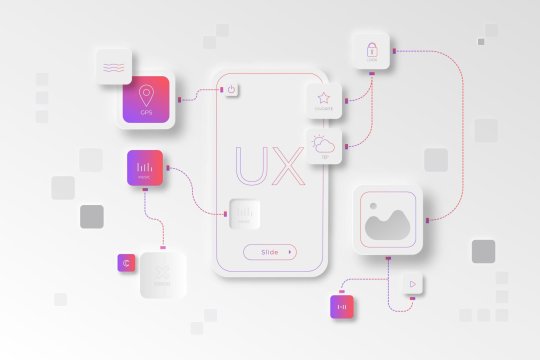
UI/UX Principles
UI/UX Principles are fundamental guidelines governing both User Interface (UI) and User Experience (UX) design. They dictate how visual elements and interactive features should be designed to optimize user satisfaction!
#https://www.techaheadcorp.com/blog/best-ux-design-practices/#ux design#user experience#design best practices#ui/ux principles#mobile app design#web design guidelines#user-centric design#interaction design#usability tips#human-centered design#responsive design#user interface design#ux research#prototyping#wireframing#accessibility in design#visual hierarchy#information architecture#design thinking#mobile app usability
0 notes
Text
Is Human-Centered Design (HCD) the Key to Crafting Emotional Experiences? - Pulp Strategy

Discover the Power of Human-Centered Design (HCD) in Creating Emotionally Engaging Experience and explore the Impact and Importance of HCD in Crafting Meaningful Connections.
#Human-Centered Design#digitalagency#google cloud web hosting#creative digital agency#digital marketing#digital agency#digital content#digitalmarketing
0 notes
Text
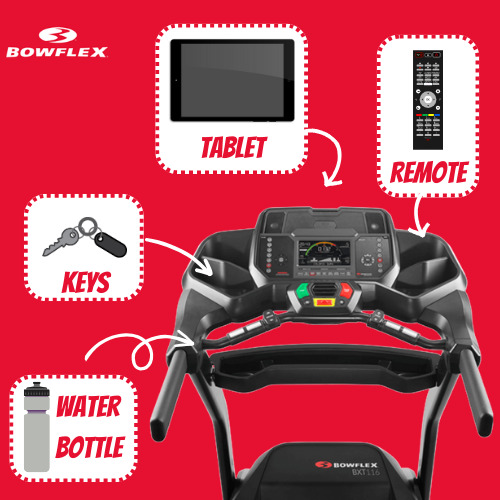
Bowflex and Human-Centered Design
I've been impressed by several Bowflex products, which appear to be designed with the pain-points and experiences of users who frequent a public gym in mind. When at the gym, I have a lot of personal items on hand. My water bottle, keys, phone, etc. This treadmill in particular has so many spaces (of various shapes and sizes) for my things--I love it! My past experiences have usually involved my water bottle on the floor because my keys are in the water bottle holder (or the cup holder is too small for the water bottle anyway), unusual workarounds that allow me to use my personal devices for streaming (literally taping my phone or tablet to the machine using athletic tape), and other minor inconveniences. This product solves many of those problems. There are almost too many spaces--more than I could ever use, but since this is in a public gym setting with many different users, I'm sure there are people who use them for their own miscellaneous things.
1 note
·
View note
Text
Technology Trends 2024: Importance of Trust

Introduction
The introduction sets the stage by emphasizing the centrality of trust in the rapidly evolving tech landscape of 2024. You convey how this guide will delve into the interconnectedness of trust and technology, highlighting how trust acts as the foundation for embracing and leveraging emerging trends.
Navigating the Tech Trends of 2024
This section delves into the prominent technology trends of 2024 and how trust is interwoven with each of them:
1. Ethical AI and Algorithm Transparency:
Here, you elaborate on how trust in AI is inseparable from transparency. You explain how ethical AI practices, including understandable and accountable algorithms, are vital for building trust among users who want to comprehend and trust the decisions made by AI systems.
2. Data Privacy and Security:
In this part, you explore the increasing significance of data privacy and security. You detail how tech trends in 2024 emphasize the need for robust data protection mechanisms, ensuring individuals have control over their personal data, and how this fosters trust among users.
3. Human-Centered Design:
This section delves into the concept of human-centered design. You explain how user-centric technology is crucial for building trust, as user-friendly, inclusive, and accessible designs resonate with users and mitigate the fear of complex tech systems.
4. Sustainable Tech Solutions:
Here, you elaborate on the intersection of sustainability and trust in technology. You discuss how eco-conscious solutions build trust among users who prioritize ethical consumption and resonate with the notion that technology can coexist harmoniously with the environment.
5. Blockchain for Transparency:
This part explores the transformative potential of blockchain technology. You detail how blockchain's tamper-proof nature enhances transparency, reinforcing trust in transactions, particularly in sectors where transparency is paramount, such as finance and supply chain management.
6. Digital Well-Being Focus:
You dive into the significance of tech's impact on mental health. You discuss how tech trends in 2024 prioritize digital well-being features, addressing potential negative effects of excessive technology usage and thereby building trust by caring for users' holistic well-being.
The Nexus Between Trust and Technological Innovation
This section delves into the symbiotic relationship between trust and innovation:
1. Fostering User Adoption:
Here, you elaborate on how trust drives user adoption. You discuss how user confidence in transparent practices and data privacy measures fuels their willingness to adopt and engage with technology, contributing to technology's successful integration.
2. Navigating Ethical Challenges:
This part delves into the ethical dimension of technology trends. You discuss how grounded ethical considerations ensure that tech innovations garner societal approval, avoid controversies, and build trust by adhering to responsible practices.
3. Enabling Collaboration:
You emphasize how trust facilitates cross-sector collaboration. By adopting shared tech standards and ethical practices, industries collaborate, accelerating innovation, and ensuring widespread adoption of technology trends.
4. Driving Regulatory Compliance:
This section highlights the interconnectedness of trust and regulatory compliance. You discuss how adhering to data protection regulations and ethical guidelines builds user trust, minimizes legal risks, and strengthens the foundation of technology adoption.
Cultivating Trust in Tech: A Shared Responsibility
This section outlines practical steps to cultivate trust in technology:
1. Transparency and Communication:
You delve into the significance of transparent communication. Tech companies must communicate data usage and AI processes clearly, empowering users with knowledge and fostering trust through understanding.
2. Regulatory Alignment:
Here, you emphasize the role of regulators in building trust. By creating and enforcing data protection laws and ethical standards, regulators ensure that technology adheres to responsible and accountable practices, enhancing user trust.
3. User Education:
You discuss the importance of educating users about tech trends. Informed users are more likely to engage confidently with technology, and education empowers them to make informed decisions about technology adoption.
4. Ethical Consideration:
This part stresses the ethical imperative in technology creation. By considering ethics from AI design to sustainable practices, tech creators enhance the reputation and societal impact of technology.
Conclusion: Trust as the Tech Enabler
As 2024 unfolds, technology trends underscore the paramount importance of trust. Trust not only underpins user adoption and regulatory compliance but also amplifies innovation and societal progress. The fusion of tech and trust empowers a future where technology is embraced with confidence, paving the way for a world where innovation thrives and users feel secure.
#Tech Trends 2024#Importance of Trust#Ethical AI#Data Privacy#Human-Centered Design#Sustainable Tech#Blockchain Transparency#Digital Well-Being.
1 note
·
View note
Text

June Jordan, "Life Studies," 1966-1976, Edited by Connor Tomás Reed and Talia Shalev, Lost & Found, The Center for the Humanities, The Graduate Center, CUNY, New York, NY, 2017
#graphic design#pedagogy#education#poetry#booklet#cover#june jordan#connor tomás reed#talia shalev#lost & found#the center for the humanities#2010s
42 notes
·
View notes
Text


When visiting the Apple Carnegie Library, I'm reminded of how the classical and modern design can be fused together to create harmony. I love the fact Apple preserved the library after years of neglect, implementing empathic design. As an outcome of human-centered design, this location has the unique space to help foster the knowledge of customers willing to learn the skills using an iPad. Amongst the old and new artifacts at the library, I feel at peace.
2 notes
·
View notes
Text
AFTERNOON TEA

Human! Bill often meets up with Axel – who is the Axolotl themselves, in a human form, to not raise suspicion among townspeople – and chats about his progress / rants about his new body and it's limitations over a warm cup of tea.
After spending centuries at Theraprism, the Axolotl became one of the very few people Bill actually grown to trust.
Someone who provides comfort.
#I swear I'm cooking smth atm#I'm just also fighting laziness and procrestination#i love their relationship sm#if his AU wasn't Billford centered I would say Hear Me Out AxoBill#oh the joys of being a multishipper#might as well tag this as that for the funsies#axobill#fixinit1#fixinit2#fixinit au#hamsty art#gravity falls#bill cipher#gf#gravity falls au#digital#digital drawing#digital art#digital artist#gravity falls blog#gravityfalls#human bill#human bill design#human bill au#human bill cipher#human axolotl#axel#gf au blog#gf au#gravity falls au blog
26 notes
·
View notes
Text

Dive into the world of UX design process with our comprehensive step-by-step guide. Unlock the secrets behind crafting seamless, user-centric experiences from start to finish.
0 notes
Text

goldie and bowl receive exposition they already know
(objectober 2024 day 27: recovery)

#dandy's doodles#the human-object singularity#thos#battle for the foreseeable future#bftff#bftff goldie#bftff bowl#bftff menorah#bftff loaf#<- i guess? she's dead#i guess if you want the exposition you can click and zoom in :) it's just how recovery centers work#of course it relies on altruism to function properly but at this point that's the general attitude anyway#and having to look for a specific object is a fun way to spend one's time. a scavenger hunt of sorts#it isn't designed to be gamified but that happens naturally#objectober#objectober 2024
31 notes
·
View notes
Text
Visual Diary 3 Post 1: Adjustable Kid's Jeans
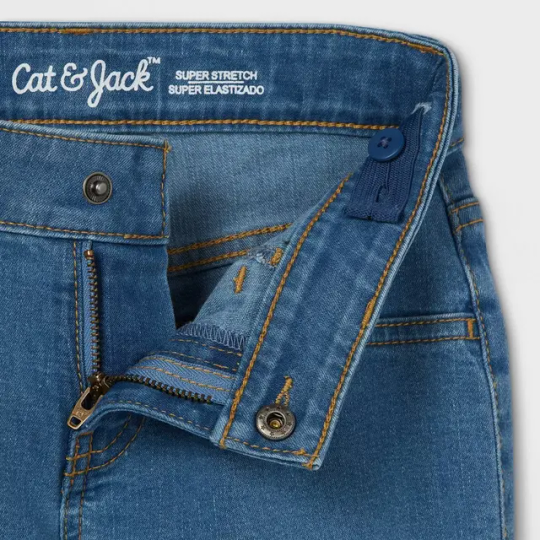
My first example of a human-centered design product is adjustable kid's jeans. As shown in this image, there is an adjustable elastic waistband that can be tightened or loosened using a button. The design is so intentionally and appropriately aimed towards growing children. I learned about these jeans in December when Angel Tree shopping vlogs were trending on TikTok. I saw a comment on one of the videos saying that adjustable kid's jeans are a perfect Angel Tree gift because they allow wiggle room for a child's size, AND allows the child to grow into jeans even a while after they were received.
I found this product to be very inspiring. Children grow so fast, and I can imagine that, as parents, it must be hard to keep up with buying new clothes so constantly. Therefore, flexible-sized jeans become a desideratum — especially in instances such as Angle Tree gifting when you are shopping for children who may not be able to afford many clothes and need these jeans to fit for as long as possible. Sizing is a human need that varies so much between different humans, and this product goes above and beyond other jeans to meet this need so well.
#Desideratum#Intentionality#Design Leadership#Jeans#Kid's Jeans#Adjustable Jeans#Human-Centered Design
1 note
·
View note
Text

Lineup of all of the characters that appear long enough to need a visual representation of them in the game lol
#I added a few people that you can randomly run into around town (like at the inn or in the forest or etc) and have very short conversations#with just to kind of flesh out the world a little more in a more natural-ish seeming way. Like nobody in the main cast would really#have much reason to talk about the actual city you're in or anything. Since most of them havent lived there that long anyway.#But if there's a ''city inspector'' that you can run into whilst he's writing up notes examining the local inn. then maybe there could be a#few dialogue options with him where you can ask about things like that. since he would know more about the area as an offical Government#Worker or etc. Optional of course. since I have to be so wary of my natural inclination to lore dump lol and am trying extra hard to make i#all stuff thats easily avoided/skipped. But for the people like ME who deliberately choose to exhaust every possible optional dialogue#option and explore every single inch of the world and try to collect as much information as possible - then there are a few extra places to#do that. Though obviously not all of them just give exposition for like 15 paragraphs blandly. Some you don't really learn anything from#and it's kind of just.. random flavor to make the non-shop map locations more ''lived in'' feeling. Like the random#little girl you can talk to in the park doesn't bizarrely start reading out the wikipedia description of some War that happened 10 years ag#or whatever. she's just complains about school a little and asks if you've tried the nearby ice cream cart treats and etc lol#ANYWAY..#some of the art is so so evil but I'm not going to spend 800 years trying to clean it up and update it. whatever the hell mess I sketched#out in 2018 or whatever is just what I'm keeping lol... it is what it is#One of the many trials of the whole 'briefly work a few months on something and then abandon it almost entirely only to pick up work#on it literally like 4 - 5 yrs later and now you must contend with trying to decipher whatever weird shit you did years ago' experience lol#Also given the population breakdowns of the world in general I think there's an unrealistic amount of jhevona in this lineup since#they're a much rarer species to just see out and about anywhere but.. it IS a global trading center type area. and the game#takes place in the north (the country of Asen. near the coast. for the maybe 2 or less people who actually keep up with my worldbuilding#enough to know where that is lol (the same continent as Navyete (where the avirre'thel live)) and there's a decent concentration#of nothern jhevona only a short ways away so... tee hee..I shall pretend it makes sense and not merely me just wanting#to represent more of that species because I think their lore is interesting lol#I MEAN also realistically there would NOT be a human here because humans are extremely isolated species that don't even know the rest#of the world exists really and human territories are extremely protected from the outside world but... of course it's like.. well we need#at least One of them to be there for the Optional Lore. Same with the Ythrili. But at least those are like.. PLAUSIBLE.. not nonsensically#outlandish. If I had a Verrucalt or something in there THEN that would be truly lore-breaking almost lol#ANYWAY.. rambling that only means anything to me because nobody else knows what I'm even referencing but hbjh#also I think my character designs are so funny in the sense that I really do just love to do the same thing over and over again ghbjh#wow... random asymmetry and belts and arm straps and high collars where the neck is completely covered?? you dont say..how novel
11 notes
·
View notes
Text
User Experience
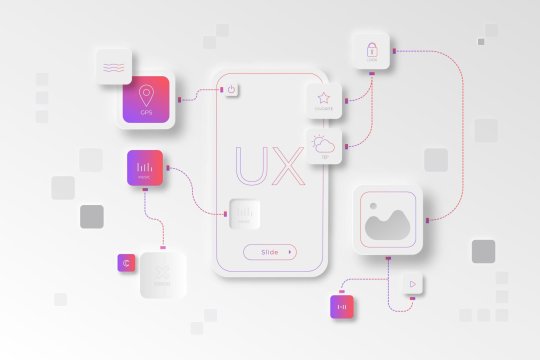
Crafting Exceptional Experiences: Best UX Design Practices Unveiled
In the ever-evolving landscape of technology, creating a seamless user experience (UX) is paramount, particularly for e-commerce websites and apps aiming to drive conversions. Therefore being aware of the best UX design practices is crucial. The significance of UX resonates throughout the entire customer journey, influencing everything from the initial click on the homepage to the ultimate order confirmation. Overlooking established UX best practices can jeopardize this seamless journey, potentially leading to missed sales opportunities. In this comprehensive guide, we delve into the realm of UX design, offering insights into the best practices curated by the expert team at TechAhead.
What Is UX Design?
User Experience design is more than just a process; it's a strategic approach that design teams employ to create products that resonate with users on a profound level. It involves a holistic design encompassing the entire journey, from the first interaction to the final integration of the product. In conclusion, UX design is the art and science of making products not only usable but also meaningful and relevant. UX design spans various dimensions, including branding, aesthetics, usability, and overall functionality. It's not limited to the digital interface but extends to all touchpoints associated with the product.
From the enticing allure of a marketing campaign to the practicality of after-sales support, every facet contributes to the user's overall experience. For UX designers, cultivating familiarity with these best practices is essential. This knowledge not only helps steer clear of common pitfalls but also elevates the customer's perception of your brand. Let's explore the key UX design principles every designer should be well-versed in.
Key UX Design Principles Every Designer Should Know
1. Deep Understanding of User Needs
Creating a seamless user experience starts with a profound understanding of user needs. You can conduct user research, user testing, and usability testing in order to gain insights into your audience and get a deep understanding of various touchpoints.
2. Design Consistency for Visual Appeal
Visual elements and design consistency are more than aesthetic choices; they impact user satisfaction. Users expect a seamless and visually consistent experience from the landing page to the last interaction.
3. Streamlined User Flow and Learning Curve
Optimize user flow and minimize the learning curvature. A well-thought-out design process ensures that users can intuitively navigate your website or app, reducing friction and enhancing satisfaction.
4. Embracing Mobile Responsiveness
In a world dominated by mobile users, prioritize mobile apps and ensure your design caters to the needs of iPhone users. Design elements should offer a consistent and visually appealing experience across different touchpoints.
5. Prioritize Accessibility Standards
Inclusivity is key. Adhere to accessibility standards, considering users employing assistive technologies like screen readers. Designing with accessibility in mind ensures that your platform is usable by a diverse audience.
Now let's delve into the UX Design best practices that should be followed in your UX design process.
Best UX Design Practices
In the dynamic landscape of digital design, ensuring that your product resonates with everyone is not just good practice—it's a fundamental principle of design ethics. As we delve into the realm of UX design, we uncover practices that go beyond aesthetics, focusing on creating inclusive and seamless experiences for users from all walks of life.
1. Prioritize Accessibility Standards
Good design should work for everyone, including those with sight and hearing disabilities. By conforming to accessibility standards in your UX practices, you're not just complying with guidelines but uplifting the user experience for a diverse audience. Consider the 8% of colorblind men—this seemingly small percentage translates to over 26 million American men. Empathy drives the design process, ensuring your product or site is accessible.
2. Keep it Consistent Across the Board
Consistency is the bedrock of UI/UX best practices. Whether it is design consistency or visual consistency, it isn't just about aesthetics; it's a strategic decision that limits confusion, builds trust, and reinforces your brand. Whether it's visual elements, functional controls, or the tone of your messaging, maintaining consistency ensures users can navigate your UI effortlessly. The various UX design elements from visual to functional elements, and even the voice and tone of your product, consistency makes the user experience predictable and intuitive.
3. Monitor User Behavior and Eliminate Friction
Your ideal user flow is the blueprint for an exceptional user experience. However, deviations from this flow can signal friction points in your design. Tools like heatmaps and session recordings become your eyes on user behavior. Identify pain points, remove blockers, and enhance the user journey. It's not just about designing a product; it's about refining it based on real user interactions.
4. Optimize the Browsing Experience
The homepage is often the first touchpoint for users. The UX on this page is critical in setting the tone for the entire experience. It should guide users on navigation, introduce categories, or search bar. Learn from common pitfalls and ensure your homepage stands out, builds trust, and establishes credibility.
5. Streamline Navigation Paths
Clear navigation is your users' GPS through your website or app. It informs them of their location, your site's content, and how to find what they're looking for. Well-thought-out navigation not only lowers frustration but also instills confidence in users. Make it user-friendly, ensuring your customers can effortlessly traverse your digital space.
6. Prioritize Mobile UX for All Users
With over half of all website traffic coming through mobile, responsive design is no longer a luxury—it's a necessity. Responsive designs look good on all screens, load faster, and rank higher in search engines. A poor mobile experience can impact your bottom line significantly, making it essential to optimize for mobile users.
7. Streamline the Checkout Process
The checkout process is a critical element of UX often overlooked. Complex checkout flows contribute to abandoned orders. Streamline the process, make it user-friendly, and conduct testing to eliminate roadblocks. A seamless checkout experience can significantly impact conversion rates.
8. Design Hierarchy for Visual Clarity
Establishing a visual hierarchy in UI design elements ensures users find primary functions faster. A clear hierarchy guides the user's attention through the interface, whether it's the size, colour, or placement of elements. Presenting functions in a logical order enhances the overall user experience.
9. Use Clear Navigation Tools
Users have pre-established behaviors and expectations. Sticky headers, search bars at the top, organized drop-down menus, and familiar page structures all contribute to a positive user experience. Align your navigation with user expectations to create a seamless journey.
These UX best practices are crucial for product managers, and the design team must inculcate these in their design process. These UX design best practices will enhance the user experience and help standardize the UX design process.
Mistakes for every UX Designer to Avoid
In the ever-evolving landscape of product development, pursuing an exceptional user experience (UX) can be riddled with common pitfalls. Let's unravel these challenges and explore how product teams can sidestep the most prevalent mistakes in UX design.
1. Failing to Prioritize User-Driven Decisions
The Mistake: It's easy for product teams to lose sight of the end-users needs, assuming that they inherently understand those needs. However, this assumption can lead to misguided product decisions.
How to Avoid It: Actively seek user feedback and let it steer your product decisions. Embrace user perspectives to validate features on your roadmap and ensure alignment with actual user needs.
2. Aimless Redesigning
The Mistake: UX design is iterative but constant and unnecessary redesigns can unsettle users. Change, even if beneficial, may be met with resistance.
How to Avoid It: Redesign with Purpose. Clearly define goals and establish a business case before embarking on any redesign. When changes are necessary, keep them small and iterative, incorporating user feedback through testing.
3. Neglecting Testing Before Iteration
The Mistake: Assuming you know what users need without thorough testing can lead to misguided design decisions.
How to Avoid It: Testing is crucial, especially during prototyping. Before launching iterations, conduct thorough testing, gather feedback, and iterate based on user insights.
4. Overwhelming Users with Information
The Mistake: Providing users with too much information, options, or features can overwhelm and hinder the overall user experience.
How to Avoid It: Embrace simplicity. If a feature or element isn't essential, consider omitting it. Avoid overwhelming users to ensure a seamless and focused experience.
5. Siloing UX Decisions Within the Product Team
The Mistake: Isolating UX decisions within the product team can lead to inconsistencies across the entire user experience.
How to Avoid It: UX design requires collaboration across teams. Work hand-in-hand with marketing, support, design, and other teams. Share user data, collaborate on design changes, and maintain open communication.
In the intricate realm of UX design, these pitfalls are roadblocks that can hinder product success. Product teams can carve a path toward a seamless and delightful user experience by actively avoiding these mistakes and championing a user-centric approach. At Techahead, we emphasize design and a holistic approach to crafting digital experiences. Explore our services and join us in creating user-centric design solutions that stand the test of user expectations.
Conclusion
From the initial interaction to the final confirmation, the user experience orchestrates a symphony of impressions. Neglecting established UX best practices can unravel this symphony, resulting in missed opportunities. In this guide, we've navigated through the core principles of UX design, exploring the essentials and unveiling the best practices curated by TechAhead's expert team. From a profound understanding of user needs to embracing mobile responsiveness and prioritizing accessibility, each practice is a thread woven into the fabric of seamless user experiences. Furthermore, we've dissected the pitfalls—common mistakes that can derail UX design initiatives. Product teams can fortify their journey toward exceptional UX by prioritizing user-driven decisions, avoiding aimless redesigning, and fostering cross-team collaboration!
youtube
#https://www.techaheadcorp.com/blog/best-ux-design-practices/#ux design#user experience#design best practices#ui/ux principles#mobile app design#web design guidelines#user-centric design#interaction design#usability tips#human-centered design#responsive design#user interface design#ux research#prototyping#wireframing#accessibility in design#visual hierarchy#information architecture#design thinking#mobile app usability#Youtube
0 notes